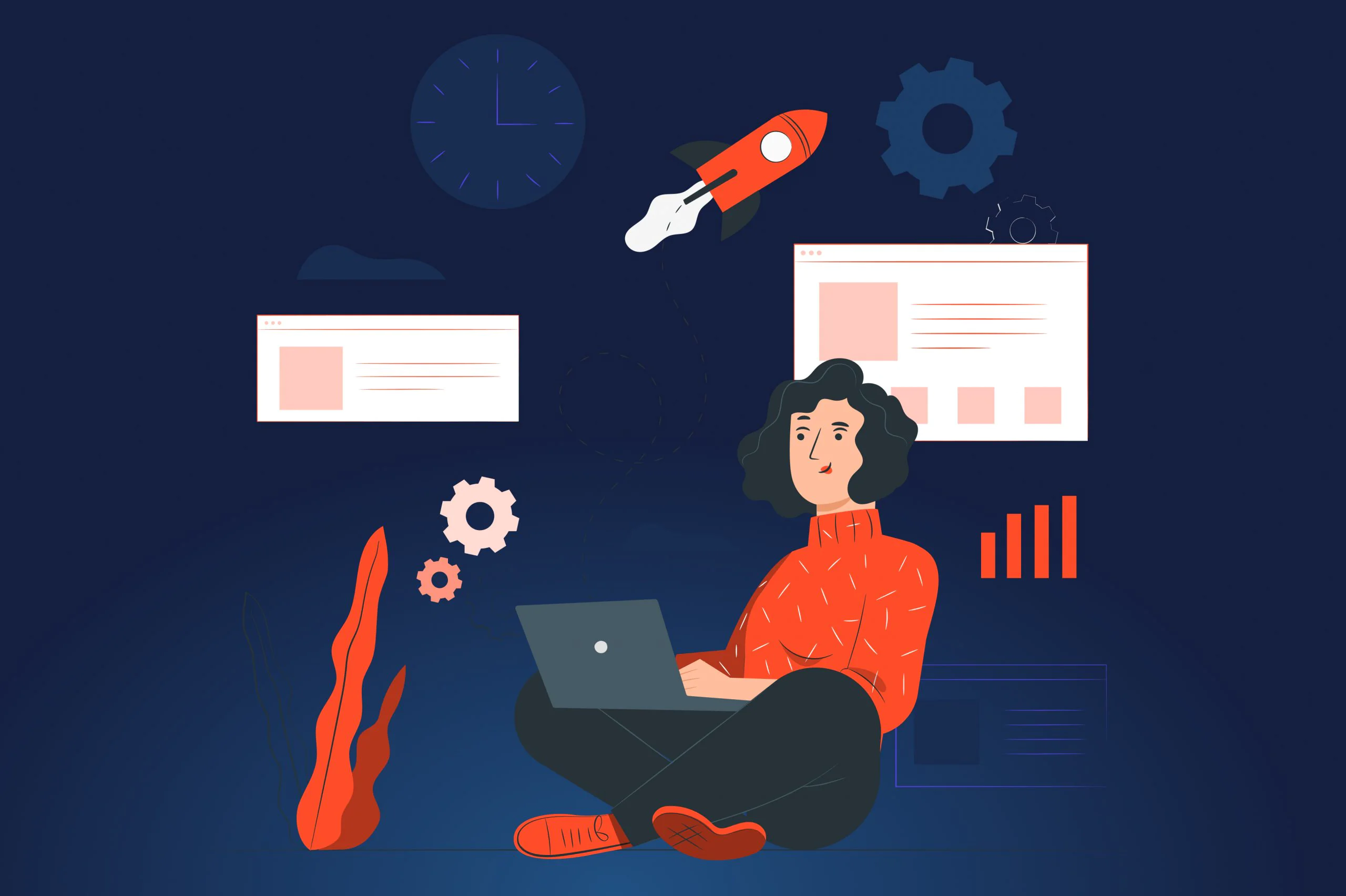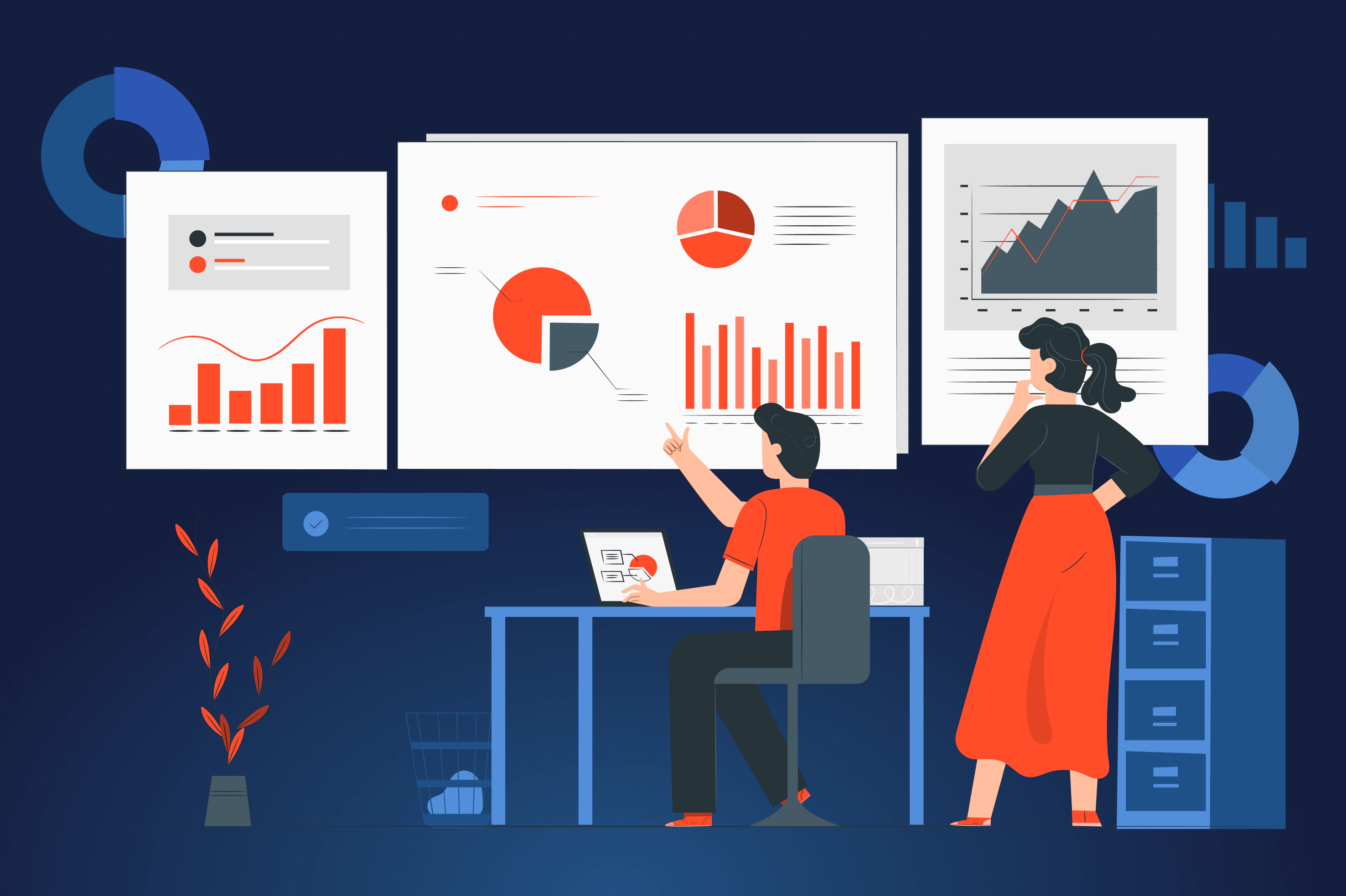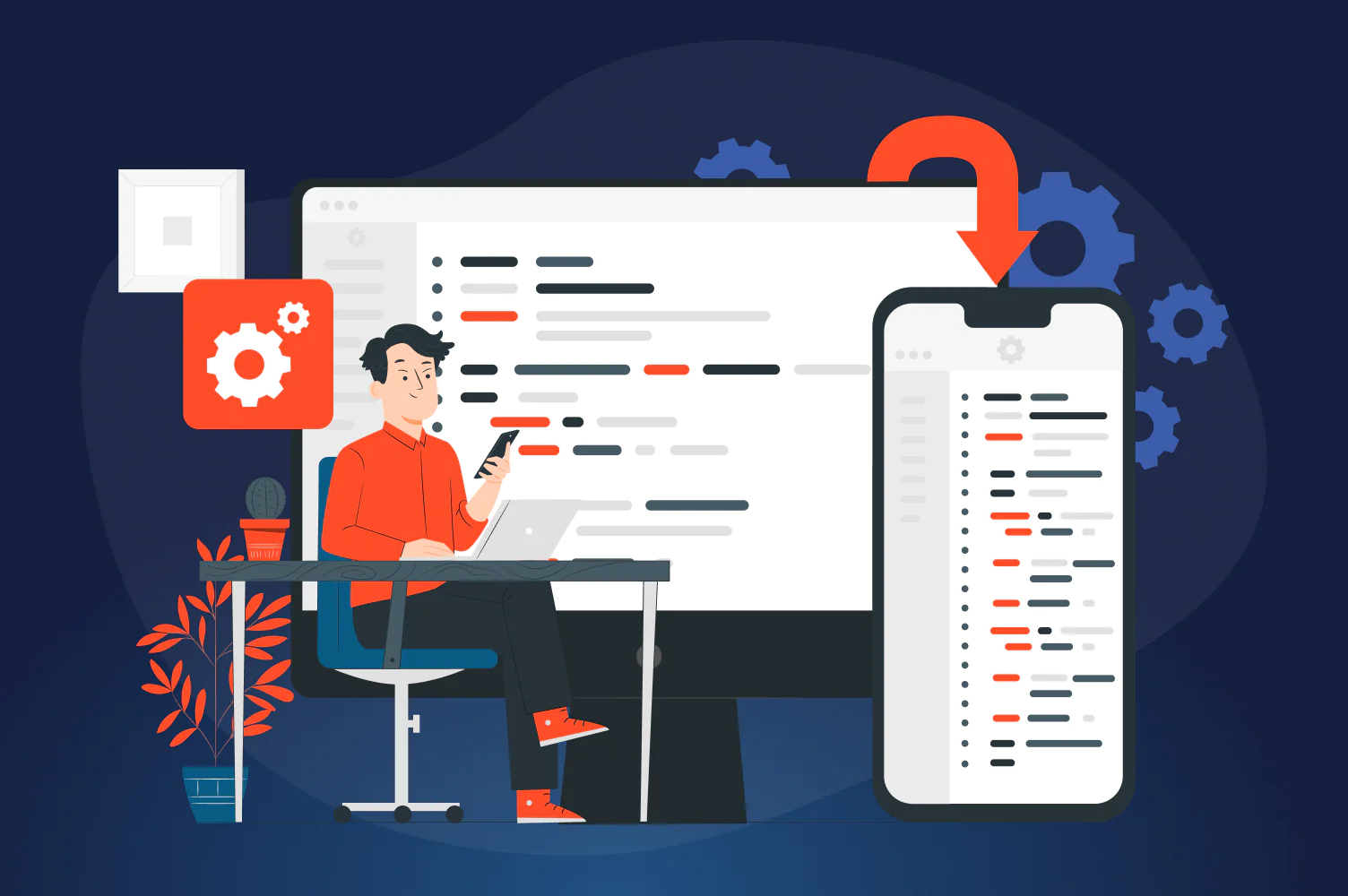If you think that your decision to bring a digital touch to the food supply chain isn’t just a smart business decision, but also some kind of moral obligation, your point definitely holds true. Boston Consultancy Group reports that a global food waste will be 30.4 million by 2030, thereby creating a stronger food disruption.
That’s why integrating Internet-of-Things technology (IoT) into the food supply chain is one of the most promising solutions for the global food industry. Actually, the future of the global food supply chain depends on the massive adoption of IoT technology, which can help to avoid a 50-90% increase in food waste levels in the near future. Moreover, Boston Consultancy Group also mentioned that a widespread connectivity of all links within the supply chain can save up to $60 billion that would be wasted otherwise.
The above-mentioned numbers say only one thing: the opportunities are vast. There are so many ways IoT technology can enhance supply chain management in the food industry, that the JatApp team decided to provide you with a big guide on possibilities IoT can create within any segment of the food industry supply chain.
From farm to stomach
Before food comes to a consumer, it goes a long way, during which food supply chain disruptions occur quite often. These barriers create a variety of opportunities that can help to keep the food in the loop of supply with much greater efficiency than ever before.
Additionally, we would like to underline that we prefer to say “from farm to stomach” rather than “from farm to table” for a particular reason. IoT solutions are especially valuable for management of food safety. With the relatable IoT technology, producers, distributors, and retailers can be sure that the food will actually reach a consumer’s belly.
Moreover, internet of things goes beyond a traditional food supply chain. Many consumers are particularly conscious about the nutritional value of the food they eat, and IoT solutions can help to make sure that consumers get fresh, organic, and contamination-free products that will only benefit their health.
So, food products go down a long and lonesome road before they get into consumers’ stomachs, which means we have oh-so-many things to discuss.
On the farm
Precision farming
Winemakers love to say that a good wine begins at the vineyard, but we think that this saying applies to the agriculture industry in general: good food begins at the farm.
However, things in farming never go as they are planned. If you don’t believe it, just watch Clarkson’s Farm show on Amazon Prime Video. Farming means constant challenges, but IoT can help to make risks less razor-sharp.
Since farming is such a gambling, farmers intend to make as many aspects of farming certain as possible. As a result, so-called precision farming is the wave of the future. Precision farming, in fact, is a scientific and data-driven approach to planting and growing crops when every single aspect is taken into account: weather, soil condition, density of planting, fertilizers used, and so on.
The use of various connected sensors can significantly improve precision farming. First, gathering the data about farmfield conditions won’t require a farmer’s on-site presence, so they will be able to manage several areas at the same time.
Second, collecting data with IoT devices means that it can be a subject to analytics and artificial intelligence forecasts about potential crop yields, its quality, and such. This may sound way too plain, but with IoT technologies precision farming will be more precise.
Farming drones
Still, crops can be managed in many other ways. For instance, the use of drones to monitor crop condition is one of the widespread IoT solutions. A drone can fast fly over the farmfield and capture images/videos of the crops. In case the footage demonstrates any problems, like insufficient nourishment or invasion of pests, a farmer will be able to react quick enough to save the harvest.
Self-driving tractors
Aside from keeping track of nuts and bolts of a farmfield management, a farmer needs people who can do all grunt work like tracktoring, planting, and fertilizing, to name but a few. Hiring enough workers can be cost-prohibitive for many farmers, which is why they need to sacrifice some part of their crops they could potentially grow to keep their labor expenses within their budgets.
But with the use of self-driving tractors and additional equipment like plow, cultivator, picker, and such farming will get much cheaper, while relatable processes are free of human error. Self-driving farming equipment can work day and night under almost any weather conditions and cut down human labor time.
Vertical farming and microfarms at home
On top of that, IoT technology advances not only traditional farming, but also brings fresh ideas like vertical farming. Instead of growing plants and vegetables in the field, it’s possible to arrange vertical modules with various plants in them. With the help of IoT, vertical farming is a feasible task within the borders of any city, which means that fresh and uncontaminated food gets closer to the consumer’s table.
A startup called Infarm provides a good example of vertical farming powered with Internet-of-Things devices. The company builds vertical modular-based farms that are connected to various sensors and placed inside special shelves with temperature, light, and moisture control.
Vertical farming modules by Infarm
TechCrunch reports that such an approach to farming uses 99.5% less space than traditional agriculture, 95% less water, 90% less transport emissions, and zero chemical fertilizers. Additionally, 90% of electricity is sourced from renewable energy sites, while the company claims to reach a zero emission food production next year.
Therefore, vertical farms supported with IoT technology can significantly simplify the process in the food delivery supply chain and reduce environmental impact made by logistic operations. At the same time, vertical farming presents an attractive business value: you can scale a vertical farm as much as possible, as installing extra plant modules is a no-brainer.
What’s more, you can cut a food supply chain to a distance from a consumer’s windowsill to their kitchen. In the post-coronavirus world, growing your own greens and vegetables isn’t just a hobby people tend to engage in after they retire, but a real way to avoid grocery store visits and take care of personal nutrition.
Rise Gardens ventures to offer home-based microfarms, where people can grow their own vegetables from the comfort of their own digs. Even such a fun activity as microsized farming can turn into utter nightmare, so growing a row of carrots on the balcony can be hard to soldier on. With the involvement of IoT sensors and smart lamps, a consumer can take full control of what’s going on with their microfarm and take necessary action based on the data reports to make their micro farming hassle-free.
An example of home-based farm by Rise Gardens
At this point, you can see that IoT for farmers offers business opportunities that are almost endless here. And it’s just the beginning of food’s journey. So, let’s check out how you can optimize the food industry supply chain by advancing food delivery and storage.
On the move
Food storage
As soon as food is grown or produced, it has to be stored somewhere before being delivered to retailers and restaurants. That is why internet of things can significantly improve the storage of foods: use of smart thermostats and infrared sensors to control the temperature in the warehouse is the primary way how IoT can make food storage cost-effective and convenient.
Smart thermostat example
In addition, IoT devices can enhance hygiene control in a warehouse by scanning and recognizing products that are contaminated or going to spoil soon. In such a way, the internet of things takes food warehousing to the next level, where food quality, health of users, and distributors’ reputation are safe and guarded with digital cameras, scanners, and sensors.
Needless to say, the same solutions are applicable to food transportation, since connected trucks and other cargo transport are possible today.
Delivery tracking
Besides storage, tracking food trucks on their way to retailers or cafes is another issue, where IoT can create a good business value as well. For starters, scanning a barcode or attaching Near-Field Communication (NFC)/Radio-frequency identification (RFID) chip on a cargo container can be used for tracking food delivery and identifying the reasons for its delay.
Barcode scanner
Tracking the route of delivery can provide distributors and retailers with a bird-eye view of the entire supply chain, which allows them to find a shorter or more convenient way to deliver food products.
By the same token, inventory management can become smart as well. As long as a food storage or cargo container is connected, it’s possible to track whether a particular store/restaurant/warehouse runs out of a specific product and plan the next delivery accordingly.
A startup Portcast even manages to use IoT devices as the primary element of its digital hold of food supply chain management. The company’s founders revealed that placing IoT devices on every single cargo container may not be that practical, while putting a few of them can gather enough data about what’s going on with this or that delivery order.
The startup managed to build a solution driven with the artificial intelligence that processes data gathered from IoT devices and other sources to predict delivery delays, avoid port entrance fees, plan delivery routes more efficiently, and forecast demand with almost 100% accuracy.
Cargo container tracking in Portcast
This example proves that rolling more than two technologies into one, especially with IoT involvement, will never harm food storage, delivery, and inventory planning. At the same time, we have even more jaw-dropping solutions to discuss as they relate to the last link of the food supply chain: consumers.
At the consumer’s table
Solutions for groceries and supermarkets
Food should be stored not only on the way to retailers, but in grocery stores, cafes’ kitchens, and consumer fridges. For that reason, IoT devices can be used here and serve the same good purposes: temperature control, identification of food contamination, and tracking of food spoilage.
Actually, grocery stores have to throw out up to 12% of the food they store. With having an IoT-driven control over storing conditions, temperature, food safety, and so on, groceries will get this percentage much lower.
Likewise, grocery stores and supermarket chains also need to plan products delivery to keep the shelves filled with fresh food, which is why the use of barcodes and NFC/RFID chips to track how much of a particular product is left in storage would be a good business idea as well.
NFC chip
Solutions for restaurants and cafes
As for restaurants and cafes, the core concept of using IoT for food storage is very much the same. Any reasonable restaurant owner takes much care of the food quality. It means that having smart sensors and cameras inside the restaurant’s fridge can be a viable solution for them. Again, the principle is the same: a fridge is installed with scanners and cameras that track the storing conditions, quality state, and availability of food products inside.
Such a solution will enable restaurant managers to avoid angry customer reviews, serve only fresh food, and never run out of ingredients. So, if you want to come to a restaurant and not to play the “guess what’s available out of this long menu list” game, think about developing a food supply chain solution for restaurants and cafes.
Smart fridges for consumers
Nevertheless, the most exciting things happen when IoT comes to storing food at a consumer’s home. Today, a fridge is not a home appliance that people think of as a place for food storage and making the kitchen interior look better. There are hordes of startups and large companies that approach fridges as smart gadgets.
To begin with, Samsung already introduced a smart fridge with cameras inside, built-in speakers, and ability to order food delivery through Amazon’s Alexa or Groceries by MasterCard.
By building smart fridges that are capable of tracking consumption, delivery offers, and management of purchase and replenishment, you can churn out subsidies from food service companies to tap into data and the revenue streams of every consumer, while they can get a smart fridge for free.
With a connected fridge, advertisers will be eager to pay for product promotion to the consumer via the fridge screen. Food brands will get one more communication channel where they can heavily rely on consumer data and the opportunity to personalize offers for every fridge owner. Consumers, in turn, will use a relatable subscription-based service to automatically order and refill their fridges with the products they like.
So far so good, but the list of opportunities doesn’t end here. Since a connected fridge has cameras and sensors that recognize availability and condition of various products, it can elaborate a bit more on this data.
Notifying about upcoming expiration dates on the products packages or recognizing a product spoilage is something we’ve already covered in this article, but what about recommending a lucky consumer a recipe they can cook with the products contained in the fridge? It seems like the eternal hardship of adult life will be resolved: we’ll always know what to prepare for dinner.
Despite such a technological breakthrough, people still trust each other’s opinions, which means that integrating an ability to share recipes and product reviews via connected fridge is another direction to develop your IoT-driven refrigerator.
Perhaps, offering a fridge for free in exchange of catering a stream of customers to food service companies and retailers may seem to be a relentlessly preposterous decision. Nonetheless, the same business model is a hallmark for many industries, so why can’t Food-as-a-Service come into play?
And what about waste?
A consumer finally eats food that has made such a long trip, and it seems like the food industry supply chain ends here. But… it’s not the end of your opportunities with IoT solutions. And no, we don’t suggest you develop small smart engines that a consumer needs to swallow to get their food digested.
Every food product has a package or at least some container, in which people carry their meals. And that’s a huge problem for the environment. Thus, the founders of a startup called Pyxo decided to take care of producing reusable food containers that include NFC chips for tracking.
The startup supplies numerous restaurants across France and beyond with reusable containers. When a customer takes the order home, they’ll be able to return a container to a restaurant or a closer collection point. In exchange, users get various incentives like discounts, promo codes, and other benefits that can be obtained with every container return.
Pyxo mobile app
The same trick can be played with food packages like bottles, boxes, and such. In fact, the reuse loop for food producers will be much longer. We need to underline that when deciding to build a relatable solution means that you’re ready to scale your business on developing necessary infrastructure or partner with food producers that are interested in taking this part of efforts on their shoulders.
Feel inspired? Get a professional team to build your IoT solution
IoT in the food supply chain offers almost infinite opportunities, but you need to remember that the internet of things is a very complex technology. Building a quality product without relevant expertise is almost impossible today because almost every solution is unique within this field. It means that you need to have experienced tech professionals in your team to develop your IoT product properly.
But fear not, you can always ask JatApp for help, as we’ve been developing IoT solutions since 2015 and we can assemble for you a team of the best tech talents from Eastern Europe. If you’re interested in cooperation with us, please leave your contact information. We’ll reach out to you as soon as possible.















